There is an ancient nobility of the Languedoc that for centuries has pursued a political-esoteric mission inspired by the Arcadian myth of the Golden Age, the kingdom of Saturn: to create an Oasis of Peace in Europe, overcoming the hated diarchy of throne and altar. The evidence of this mission can be found scattered throughout the history of Europe starting from the foundation of the Merovingian monarchy until the Second World War, and can be found in all the main socio-political and religious events that we will identify in our study..
di Michael Allegri
Originally published on FreeReporter; cover: Nicolas Poussin, “Bacchanale devant une statue de Pan”, 1631-33; part 2 of 2
[follows from part 1]
The action of this subversive nobility continued in the following centuries. In the heart of the French Catholic Church he founded the Company of the SS. Sacrament of the Altar who plots against the royal house and the cardinals linked to Rome. In France, the noble Fronde in 1643 met, once again in Stenay, under the guidance of Frederick Maurice de la Tour d'Auvergne, Duke of Bouillon, who would have liked to see Gastone d'Orleans of the House as the new king of France. of Lorraine. The Frond organized itself to depose Mazarin and prevent the accession to the throne of Louis XIV and the regent mother, Anna of Austria. The cardinal bestowed paid noble titles to support the expenses of the state, openly challenging the ancient noble families and taxing the ancient nobility which responded by stirring up the people and unleashing a civil war that lasted ten years.
Among the major Frondists, in addition to Bouillon, the Duke of Gisors, the Viscount of Turenne, the Duke of Longueville, nephew of Luigi Gonzaga, the Duke of Nevers and the Baron Ange de la Joyeuse, governor of Languedoc. His daughter will later marry Charles of Lorraine, Duke of Guise. Another important frondist will be Gastone d'Orleans, who will first marry Maria di Borbone, daughter of the baroness of Languedoc Enrichetta Caterina de la Joyeuse, and then, in second marriage, Princess Margherita de Vaudemont, of the Guisa family, whose possessions in Lorraine they included the city of Stenay. De La Joyeuse will play an important role in the conspiracy of the Frond, offering their castle in Arques, now a hotel, for important meetings of the conspirators.
The Frond, however, failed in its objectives, paving the way for the absolutism of Louis XIV who went down in history as the Sun King. At this point, in 1627, the nobles decided to hide the Fog and the Angelic Society behind the cover of a ecclesiastical company, with the help of some important members of the clergy. They then founded the Company of the Holy Sacrament of the Altar (also called dei Kabbalah devotees), whose headquarters was in Paris, in the Church of San Sulpizio, where an ancient pagan temple dedicated to Isis once stood and in which non-Christian esoteric symbols are still visible: the octopus under the stoup, a double SS in the shape of a snake, deliberately overturned sacred images, nineteenth-century paintings that refer to a stolen treasure, which show that this church will remain for another two hundred years at least a meeting point for noble heretics and subversives and their allies, including which the modernist Catholics, excommunicated and condemned by Saint Pius X in 1907. Among the major exponents of the Company, once again, Gastone d'Orleans and then Charles Fouqet, brother of the finance minister, the Baroness d'Arques of Languedoc, Father de Codren, St. Vincent of Paola, Jean Jacques Olier and the powerful bishop of Languedoc Nicolas Pavillon, considered by the Roman curia "the protector of heretics".

The Statutes of the Company refer to the "Secret as the soul of the Company", which was not to be disclosed to anyone. The Company had men everywhere, in parliament, in the judiciary and in the police. At the apex of it, the "Invisible cenacle", which recalls the contemporary German Rosicrucian manifesto which speaks of a "secret and invisible fraternity" dedicated to alchemy. This body, only apparently Catholic, was filled with Jansenists and Protestants and protected many men suspected of heresy. Like the Fronde, it politically opposed Mazarin, of which it should have been an ally, while the Society of Jesus and some important French bishops defined it an organism "heretical, dedicated to unholy practices of initiation, magic and kabbalistic doctrine", according to a refrain already used for the Templars.
In 1660 King Louis dissolved the Company. Five years later, Archbishop Fouquet wrote a letter to his brother, the former finance minister of Louis XIV. The letter is contained in the French Art Archive of 1862 and we can read how the archbishop still mentions, in a somewhat conspiratorial way, the famous Secret of the Company which brings advantages to those who know him. He mentions a recent meeting with the Poussins painter during which they talk about “gods advantages that even kings would have great difficulty in obtaining and that no one in the world will ever discover in the centuries to come". For some time the former minister and magistrate Fouquet had been under the attention of the king's secret services, who arrested him and searched all his correspondence, also finding this incriminating letter.
The king demanded to know what the Secret was. He wanted to sentence Fouquet to death but the Company, despite being dissolved, mobilized its judges to mitigate the sentence (he was sentenced to life imprisonment). In all likelihood, the king thought the Secret was a treasure, perhaps Templar gold hidden in Languedoc or treasury of the Temple of Jerusalem stolen by the Visigoths in 70 AD and brought near Carcassonne, in Languedoc, where these families had enormous power. King Louis XIV then ordered Minister Colbert to call Swedish workers to excavate the Razès area in the Languedoc, in search of the treasure. He found nothing.
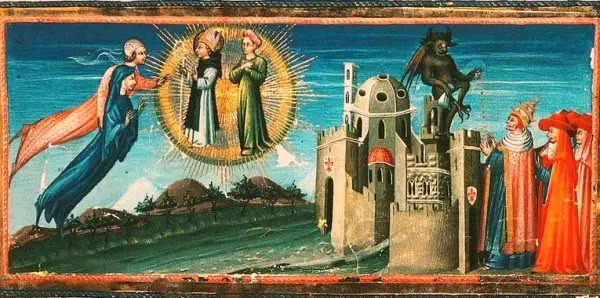
From the dispersion of the Compagnia del SS Sacramento they developed cells, similar to Masonic lodges, called AA (Angelic Friendships), which mostly affiliated priests, bishops and cardinals from the Languedoc area. 1400 clerics were enrolled in the AA of Toulouse, in Languedoc, between 1665 and 1890. The AA Clericals, as they will be called, will spread everywhere, always with the same interest as "Do not disclose the Secret" as "The Secret is the soul of the AA, disclosing it means destroying them". And again “it is absolutely necessary to keep the Secret, not to reveal it to anyone, or to the closest friends, to relatives or even to the most reliable confessor. No sign, no word to make us suspect the Mystery ”. For this reason the meetings had to always be secret, the Statutes and the lists of the members not available to anyone and, in case of controls, they had to be burned.
The AA were said to manifest a certain interest in the occult part of the ancient Egyptian religion, especially for the practice of mummification of bodies and for the magic formulas for their resurrection. In 1913 a French writer named Henri Bégouën carried out an in-depth study on the subject, finding important documents also in the Vatican. According to him, in the central management that oversaw these AA there were numerous nobles such as the prince of Polignac. The AA will continue to fight against the absolute monarchy even at the time of King Louis XVI, leaving tangible signs of their existence at least until 1890. A part of the French nobility therefore found itself allied with the third estate in the French Revolution of 1789. Characters such as the Marquis and General Lafayette (who had contributed to the revolution of the military of the American colonies against the English royal house) and the Comte de Mirabeau were advocates of a parliamentary monarchy.
The AA encouraged and corroborated this noble group who thought they were leading the revolution by overthrowing absolutism and saving the monarchy at the same time. However, they were blown away by the strength of the bourgeoisie, which meanwhile had forcefully entered the Deist and Enlightenment Masonic lodges not linked to the nobility, and that he wanted the republic, managing to obtain it in 1792. Led by Danton, he demanded and also obtained the death sentence of the Capetian king Louis XVI. As a legend says, approaching the gallows, the executioner, before guillotinating him, said to him:
This is the revenge for the death of Jacques De Molay, great master of the Templars!
At that point, the AA of the former Cathar areas of Mirepoix, Carcassonne, Perpignan took steps to expatriate nobles and clergymen that the sanculotteria wanted to exterminate to nearby Spain. Like an octopus, once again the organization sank and camouflaged itself, waiting for the end of the revolution and the start of the Restoration with the Congress of Vienna. Given the general interest of the nobles in Freemasonry in Europe and America since 1717, in 1780 the Marquis of Southern France De Chefdebien founded the secret cenacle of the Filadelfi, connected to the Templar tradition. Among his followers, the Neapolitan marquis and Freemason Raimondo de Sangro, an alchemist known for his unusual and disturbing practices of mummification of bodies. In 1838 the Marquis of Languedoc Jacques-Etienne Marconis De Nègre of Le Clat took the reins of the strictly occultist Egyptian Freemasonry founded by Giuseppe Balsamo, count of Cagliostro, advisor and healer of some popes. Among the adherents the Marchesa de Bozas. This Freemasonry later became the Egyptian Rite of Memphis and Mizrain, still practiced today in many Masonic obediences.
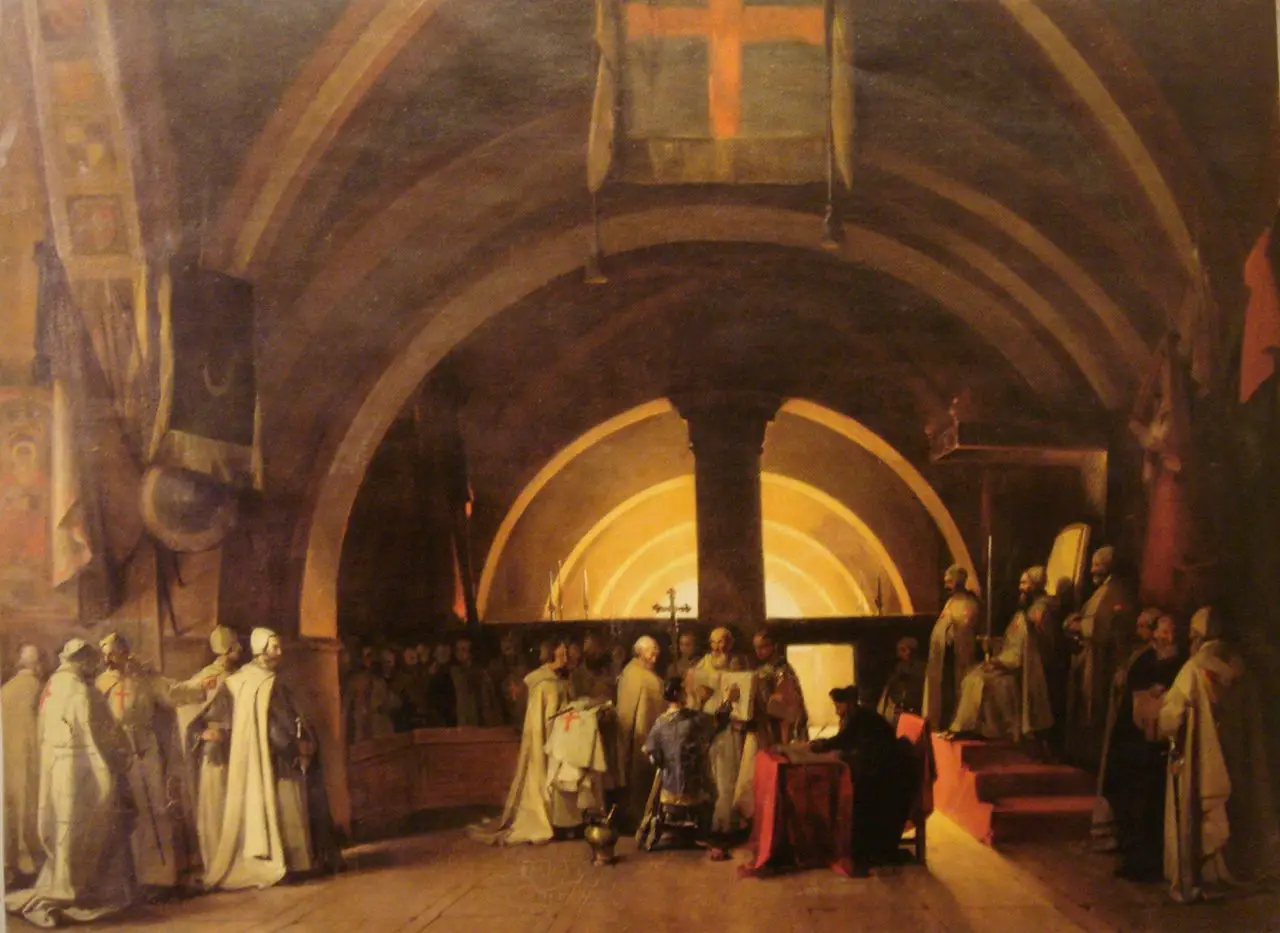
Esotericism, secret societies and politics become a vital triangle for that part of the nobility it has like Mission the formation of a united Europe in the name of Saturn. Also at the end of that century another occult organization appeared: lo Hiéron du Val d'Or, a re-edition of the Angelic Society and the AA. It was founded by a priest linked to the Counts of Chambord, Victor Devron, by the Russian-Spanish baron Alexis de Sarachaga and by the count Etienne d'Alcantara and once again, he adopted the octopus as a symbol. He devoted himself to the study of druidismand cabala and Adamic language, to the tradition of Atlantis, to the figure of the snake or primeval dragon "God mediator, creator and preserver of life" and will attempt to restore "the sacred monarchy". It too will venerate some sacred tombs and some Celtic dolmens present in Languedoc.
Atlantis was their official magazine and, for many scholars, the Hiéron was a mysterious kabbalistic center hidden behind the appearance of a Catholic group, so much so that in 1888 the Roman curia discouraged many clergymen from joining it. Despite this, the Hiéron will get the support of Pope Leo XIII, the last of the popes to be a partner of Arcadia for which, under the pseudonym of Neandro Ecateo, he was a notable poet in Latin. Among the members of the Hiéron du Val d'Or, the noble family of the Chambord, related to the lineage of Austria d'Este. It should be noted that the Count of Chambord had as tutor the Marquis d'Hautpoul-Felines, whose cousin was the general and minister Hautpoul de Beaufort, belonging to the AA and to the Egyptian Freemasonry, who worked hard to bring to the throne the Count of Chambord of France. The Marquis Chaumeil, regarding the objectives of the Hiéron, declared in 1980:
A theocracy in which the nations would be nothing more than provinces and their leaders would be nothing more than proconsuls in the service of a world government.
For Europe in particular, it was the Habsburg-Lorraine who would be the new dynasty of priest-kings. In fact, between 1895 and 1917, shortly before and during the First World War, there were strange meetings in Languedoc which saw priests and bishops together, such as Monsignor Billard, artists such as Emma Calvé, writers such as Maurice LeBlanc (the author of Arsenio Lupine), politicians such as the Minister of Cultural Heritage Henry Charles Dujardin-Beaumetz, nobles such as the Marquise du Bourg de Bozas, bankers from Hungary, Switzerland, England and above all from the hated Germany, personalities of rank such as Archduke Giovanni Salvatore of Habsburg and Hungary, cousin of Emperor Franz Joseph, who will continue to be seen in those territories until 1916, despite the war between France and the Austro-Hungarian Empire. In all likelihood, another plot was being planned for peace, for a different Europe, without internal conflicts between states, all governed by a monarchy legitimized by its ancient descendants. The events, however, went in a completely different direction.
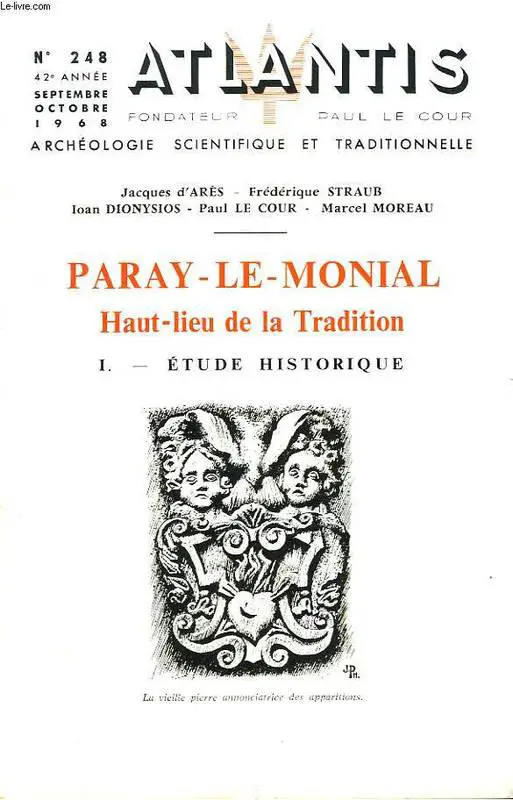
After the First World War in Germany in 1918 and the emperor fell, the Thule company, in memory of the legendary island of Northern Europe similar to the Greek Atlantis. Some founding myths of this esoteric society recall those of the Angelic Society, the AA and the Hiéron du Val d'Or: occultism, paganism, blood-related traditionalism, heraldic research into noble genealogies, tales of the Grail, Agarthi's underground kingdom, ancestor worship, magical practices and symbols of Northern Europe and above all the advent of the great monarch. Among the adherents stand out the countess Von Westarp, the prince Thurn und Taxis and some members of the German workers' party which later became the National Socialist party, including Rudolf Hess, already Hitler's dolphin.
With the Nazi party, this company had a relationship of love and hate. Its founder, the aforementioned Baron Von Sebottendorf, started in 1901 in an Egyptian rite Masonic lodge, had always shown great interest in the Tibetan religion but also in the Jewish cabala and the ever-present secret movement of the Rosicrucians. For this reason, precisely because of his exaggerated propensity towards the occult, he was arrested by the Nazis and this club was officially dissolved in 1925. Despite this, to take an interest in the Languedoc area and above all in the lineage of the nobles of this area and in the legends of the Grail, in those same years there was the writer otto rahn, who was a colonel of the German SS and who mysteriously disappeared in 1939 in the Pyrenees near the caves of Sabhartes. In the 40s, after the armistice with France, Himmler sent a special team of the Ahnebnerbe and the special services of the SS to Montsegur, in the Cathar fortress, to carry out research that remains shrouded in mystery to this day.
Also from Germany, a lot of funding had previously come to Lenin and the Bolsheviks. The insurrection against the Tsar was financed directly by the German Emperor who wanted the Russian army to leave hostilities. Part of that money also went to Prince Eugene Vladimirovic Lvov of the Rurik dynasty who, after the revolution of February 1917, deposed Tsar Nicholas II (who had abdicated), becoming provisional head of the Russian state. Already in the late 1800s, many Russian nobles closely linked to France had entered an elitist and occultist movement founded by Nikolaj Fedorov which took the name of Cosmism. Among them were writers, philosophers, scientists, artists: the same milieu of the Angelic Society. Once again, a symbolic monument to science was erected, which was to seek a remedy for death. Hence a magical-materialist doctrine which, in part, influenced and then merged with the doctrine of Marxism-Leninism, at least until the advent of Stalin: the construction of the new man and of an immortal humanity, the development of a science capable of overcoming death and resurrecting bodies, the search for new planets to colonize.
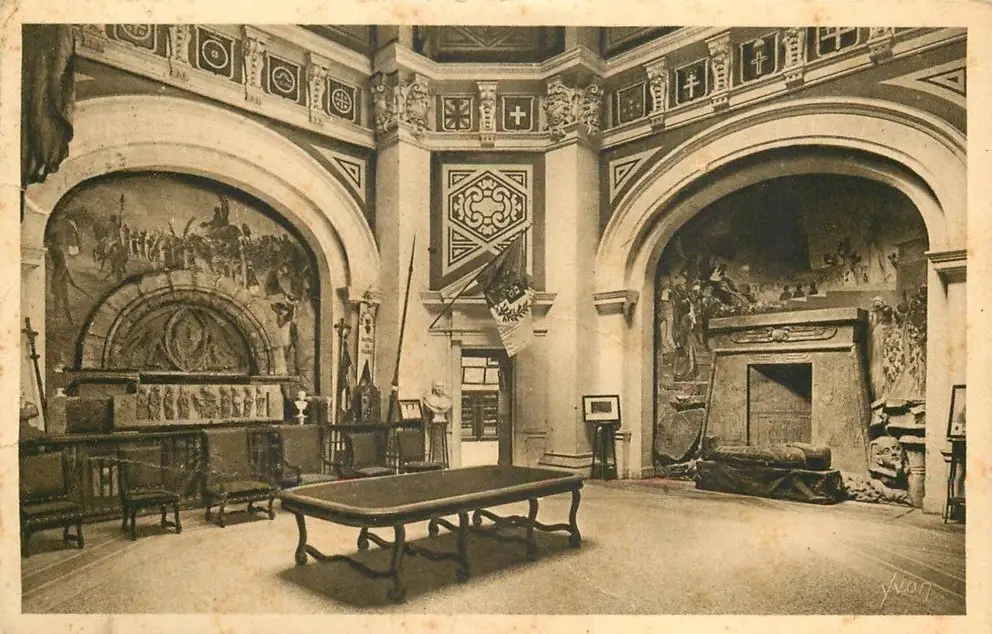
In Europe, meanwhile, the Hungarian count Richard Coudenhove-kalergy founded the Pan-Europe. It was joined by prominent politicians such as Winston Churchill (formerly belonging to Freemasonry and the Golden Dawn), Leon Blum, Eduard Benes but also scientists such as Albert Einstein, mathematicians such as Bernard Shaw, writers such as Paul Valery. In it the idea of a united Europe, of peace, without internal wars returned forcefully. The House of Habsburg, which we found to be very active in Languedoc, made an active contribution to the development of the guidelines of this think tanks so much so that the prince of Austria and Hungary Otto of Habsburg, son of the former empress Zita, remained honorary president of the same until the date of his death in 2011. Also in this case, events took another turn and came to the Second World War.
The nobility that at first, while turning up their noses, had given the green light to the rise of Hitler, began to organize itself against him. Many were the blue-blooded conspirators who wanted to restore peace to Europe. Among these, the count and diplomat Albert Bernstorff, the count Axel Von der Bussche, the count Fritz Schulenburg known as "the conservative rebel" and leader of the German resistance. And again Marion Donhoff of the Junker family of East Prussia, known as the "red countess", Count Von Gersdorff, Count Von Trott. These nobles began to think of a different Europe, united, federal, peaceful and to prepare the ground for the United States of Europe, organized 61 attacks against the Fuhrer of National Socialist Germany. They also founded the Kreisau, a reserved circle of neo-pagan culture, headed by Count Helmut Von Molkte, diplomat and cousin of Colonel and Count Claus Graf Von Stauffenberg, who went down in history as the creator, on July 20, 1944, of the Operation Valkyrie, who was supposed to suppress Hitler and the entire Nazi regime.
The theme of a united, peaceful Europe, based on esoteric traditions, made a strong comeback in the Second World War. Finally, to give us testimony of this Paul Rumor, grandson of Mariano, five times President of the Council of Ministers and son of the lawyer Giacomo, former white partisan and collaborator of Pope Paul VI. Paolo Rumor said that his father was aware of theexistence of a very ancient “structure” in Europe called the “Order of the Ardennes or of Stenay”, invisible, divided into cells (like the AA). "It disguises itself" as an octopus "behind other associative, dynastic and religious groups". It has pro-Egyptian occultist views and, in politics, is committed to building a united and peaceful Europe. He went to great lengths in the 1957s to build the ECSC (Coal and Steel Agreement), Euratom (Nuclear Energy Agreement) and the EEC (the European Economic Community, Treaty of Rome in XNUMX).
Then there would be a letter from Maurice Schumann, founder of Gaullism in France, addressed to the lawyer Rumor, with the list of the most important adherents of the past to this structure, many of them nobles and artists such as Salvador Dali, for example. Attorney Rumor first held meetings with this group in Vienna and the Languedoc but then left the field. As a Catholic, he did not feel at ease among these exponents of power who, according to him, were in many circles, also in the Vatican, dedicated to esotericism, to the study of the first civilization of Atlantis, to Egyptian magic, to the descendants of the Cainites and of certain noble families which, in the past, have always opposed the absolutism of monarchies and theocratic obscurantism.
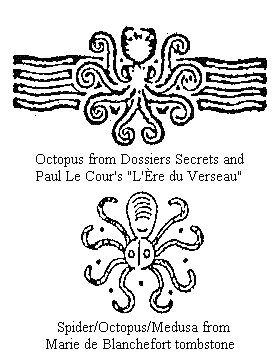
End of part 2 of 2

But, question: how did the barbarians have such a cultured tradition when they barely knew how to articulate words, let's not talk about writing?
Sorry but for once I'm afraid I don't understand what you mean
In the sense, if I have understood correctly in the text an extreme value is given to the first Frankish kings, seen as the custodians of an ancient Christian knowledge, when at the time they were illiterate, even pagans. Did I interpret the steps correctly? If so, it is an obvious inconsistency.
Depositaries of an ancient knowledge yes, I would not say Christian if I have understood Michael's text well. Or at least not purely Christian, which over the centuries has been adapted to Christian dogmas is a different matter. It seems to me that the author of the study exposes the present “pagan” elements of the underground cult (in all senses) first of the Merovingians and then of all the secret organizations that have derived it from these. That they were illiterate may also be true, but the equation illiteracy = ignorance regarding esoteric issues seems to me really daring: in this perspective also the chiefs and medicine-men of the various native American tribes, custodians of considerable secret knowledge, would they be considered at the level of illiterate yokels? Alce Nero's memoirs, just to take the best-known example, suggest a very different answer. The same can be true, I repeat from the point of view of "pagan" mysteries, to the Merovingian kings, who among other things are remembered by the historical chronicles as "thaumaturgic kings", able to heal with the only laying on of hands (as they would be in able to make some medicine-men of the Amerindian tribes, and not only).
If the text does not have purely Christian connotations, then it may be that the right perspective is yours, reading I have often seen Christian references, Christian sects, Christian liturgies, which is why I doubted how true all this could be, given that official Christianity is based on not too ancient scriptures. Thank you for the clarification.